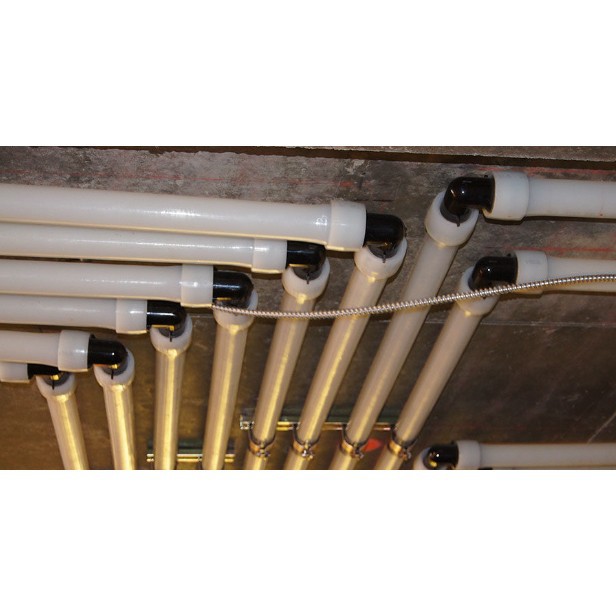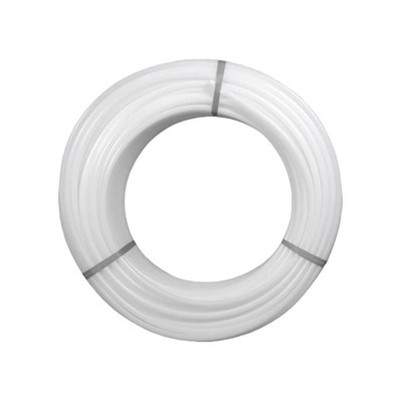How to bend pex - a pipes?
Leave a message
As a supplier of PEX - A pipes, I've had the privilege of witnessing the growing popularity of these pipes in various plumbing applications. PEX - A pipes are known for their flexibility, durability, and resistance to corrosion, making them an ideal choice for both residential and commercial plumbing systems. One of the most useful features of PEX - A pipes is their ability to be bent easily, which simplifies the installation process and reduces the need for numerous fittings. In this blog post, I'll share some in - depth insights on how to bend PEX - A pipes effectively.
Understanding PEX - A Pipes
Before we dive into the bending process, it's essential to understand what makes PEX - A pipes unique. PEX - A, or cross - linked polyethylene type A, is created through a peroxide cross - linking process. This results in a highly flexible and resilient pipe that can withstand high temperatures and pressures. PEX - A pipes are also resistant to scale and chlorine, ensuring a long lifespan for your plumbing system. You can learn more about PE - Xa Pipe for Plumbing Pipe on our website.
Tools Required for Bending PEX - A Pipes
To bend PEX - A pipes successfully, you'll need a few essential tools:
- Bending Spring: A bending spring is a must - have tool for bending PEX - A pipes. It helps maintain the shape of the pipe during the bending process and prevents the pipe from collapsing. There are different sizes of bending springs available, so make sure to choose one that matches the diameter of your PEX - A pipe.
- Heat Gun: In some cases, especially for tighter bends or when working with larger diameter pipes, a heat gun can be used to soften the pipe and make it more pliable. However, it's important to use the heat gun carefully to avoid overheating the pipe.
- Measuring Tape and Marking Tool: To ensure accurate bends, you'll need a measuring tape to measure the length of the pipe and a marking tool, such as a permanent marker, to mark the points where you want to make the bends.
Step - by - Step Guide to Bending PEX - A Pipes
Step 1: Prepare the Pipe
First, measure the length of the pipe you need and cut it to the appropriate size using a PEX pipe cutter. Make sure the cut is clean and straight. Then, insert the bending spring into the pipe at the point where you want to make the bend. Push the spring in far enough so that it covers the entire area of the bend.
Step 2: Mark the Bend
Use a measuring tape and a marking tool to mark the starting and ending points of the bend on the pipe. This will help you achieve the desired angle and radius of the bend.


Step 3: Make the Bend
If you're making a gentle bend, you can simply use your hands to bend the pipe around the bending spring. Apply slow and steady pressure to the pipe, following the curve of the spring. For tighter bends or larger diameter pipes, you may need to use a heat gun. Set the heat gun to a low - medium temperature and slowly move it back and forth along the area of the pipe where you want to make the bend. As the pipe heats up, it will become more flexible. Once the pipe is soft enough, carefully bend it around the bending spring to the desired angle.
Step 4: Check the Bend
After making the bend, remove the bending spring from the pipe. Check the bend to make sure it meets your requirements. The pipe should have a smooth, even curve without any kinks or wrinkles. If the bend is not satisfactory, you can try reheating the pipe and adjusting the bend.
Tips for Successful Bending
- Avoid Overheating: When using a heat gun, be careful not to overheat the pipe. Overheating can damage the pipe and reduce its performance. Keep the heat gun moving constantly and test the flexibility of the pipe frequently.
- Use the Right Bending Spring: Using the correct size of bending spring is crucial for achieving a proper bend. A spring that is too small may not support the pipe properly, while a spring that is too large may be difficult to insert and remove.
- Practice on Scrap Pipes: If you're new to bending PEX - A pipes, it's a good idea to practice on scrap pieces of pipe first. This will help you get a feel for the bending process and improve your skills.
Common Applications of Bent PEX - A Pipes
Bent PEX - A pipes are used in a wide range of plumbing applications, including:
- Underfloor Heating Systems: PEX - A pipes can be bent to fit around the contours of a room, making them an excellent choice for underfloor heating systems. The flexibility of the pipes allows for easy installation and efficient heat distribution.
- Potable Water Systems: In residential and commercial buildings, bent PEX - A pipes are used to connect fixtures such as sinks, toilets, and showers. The ability to make bends without using numerous fittings reduces the risk of leaks and simplifies the installation process.
- Hydronic Heating Systems: PEX - A pipes are commonly used in hydronic heating systems, where they can be bent to create loops and circuits for hot water circulation.
Combining PEX - A Pipes with Other Components
PEX - A pipes can be easily combined with other components to create a complete plumbing system. For example, PPSU Tee can be used to connect multiple PEX - A pipes at a junction. These tees are made of polyphenylsulfone, a high - performance plastic that is resistant to heat, chemicals, and pressure. Another important aspect is the PE - Xa Pipe Watermark, which ensures that the pipes meet the required standards for potable water applications.
Contact for Procurement
If you're interested in purchasing high - quality PEX - A pipes for your plumbing projects, we'd love to hear from you. Our team of experts can provide you with detailed information about our products, help you choose the right pipes for your specific needs, and offer guidance on installation and bending techniques. Whether you're a professional plumber or a DIY enthusiast, we have the products and support you need to ensure a successful project.
References
- "PEX Pipe Installation Guide", Plumbing Manufacturers International
- "Cross - Linked Polyethylene (PEX) Pipe Systems: A Technical Overview", American Society of Plumbing Engineers




